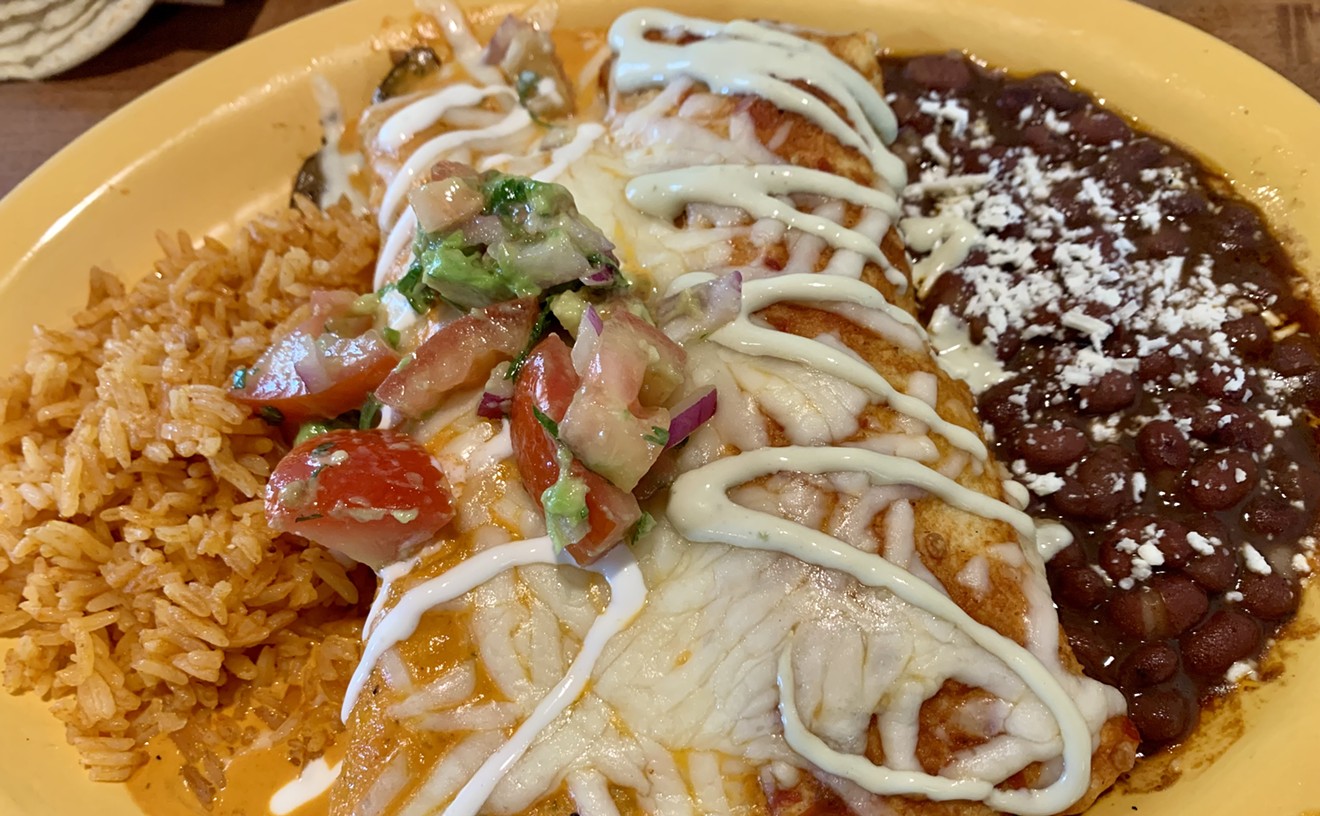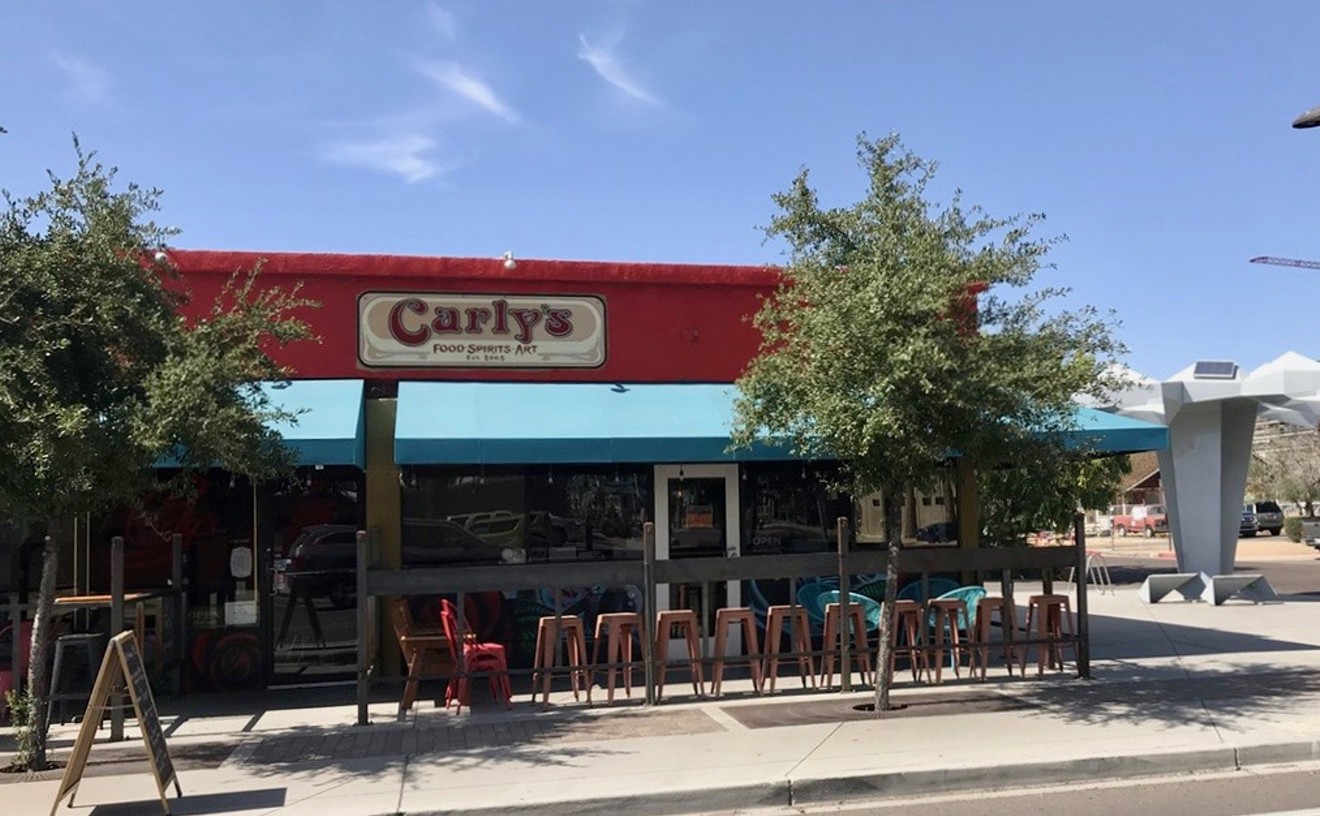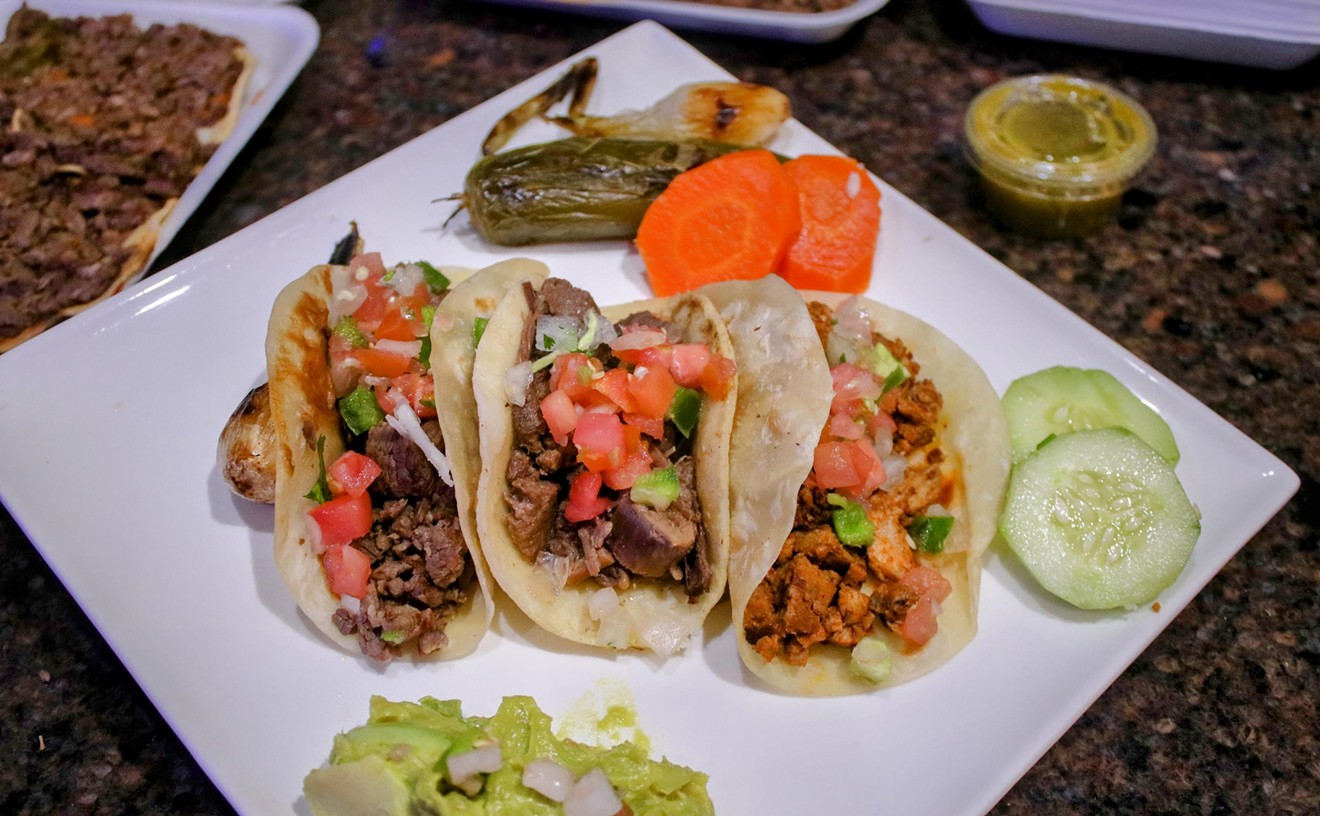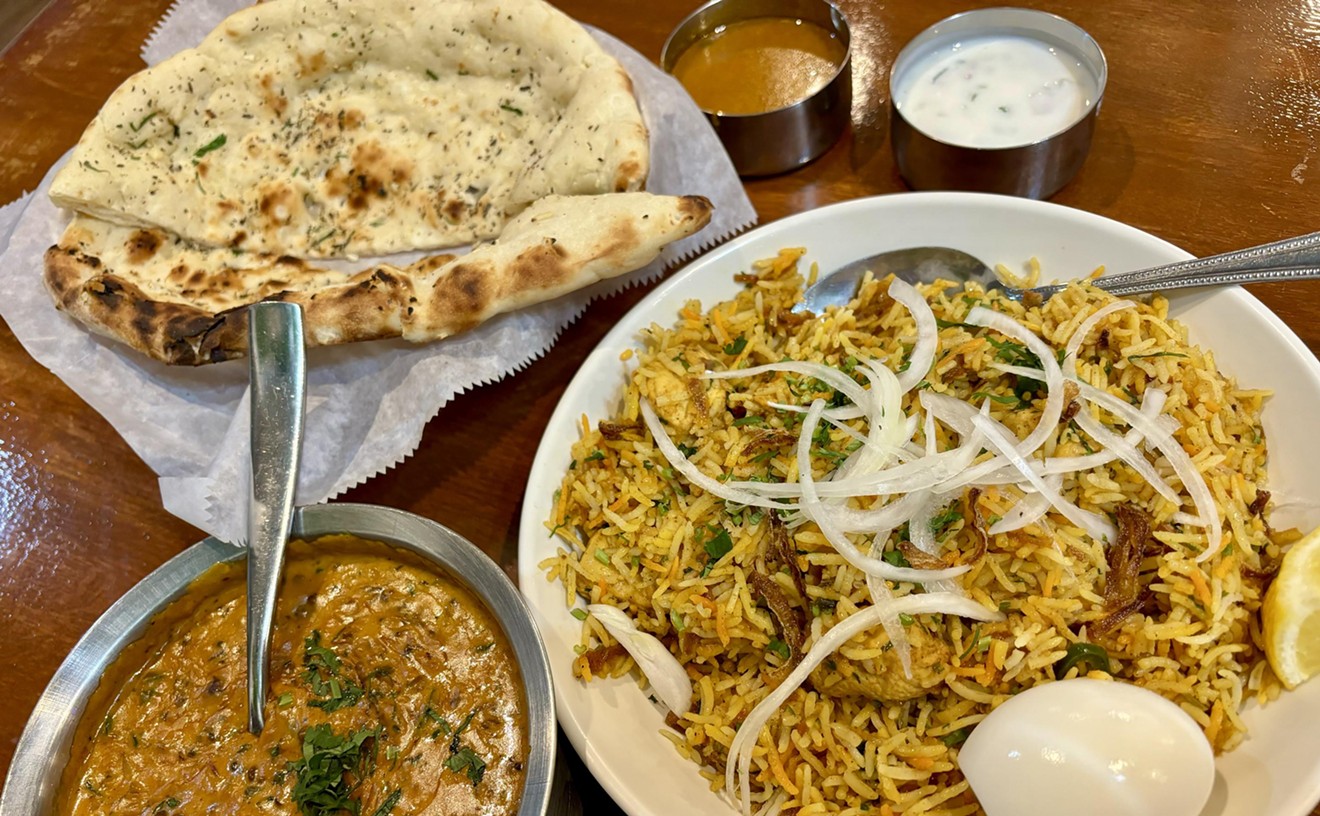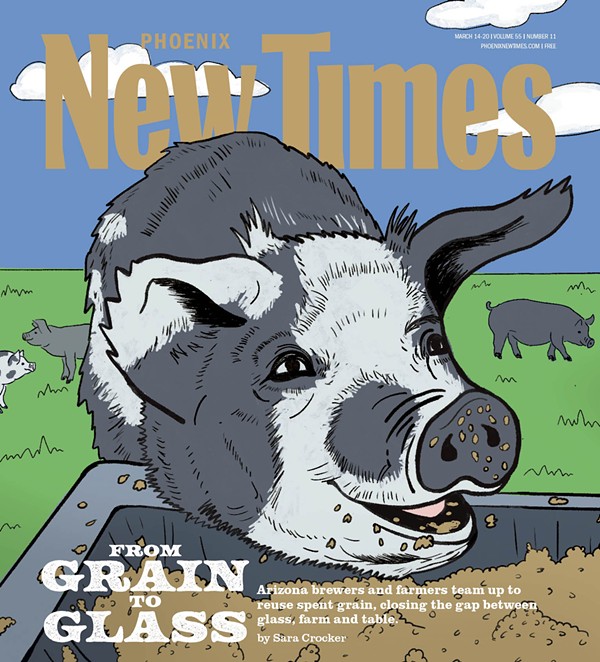The 2016 edition of New Times' Best of Phoenix is out now, featuring a series of essays that explore how our city's proximity to Mexico makes it better.
For the past three years or so, my husband and I have lived in a squat, plain, sun-faded house built in 1954 (pretty old by Phoenix standards), in a shabby west side neighborhood nobody ever bothered to name.
Our neighborhood is criss-crossed by alleyways, wild jungles of tall weeds and wind-strewn trash, with big communal trash cans that are picked over regularly for aluminum and other recyclables by a familiar array of neighborhood homeless folk.
If you follow our street east, you’ll run into a small park encircled by a gravel lane where homeless families sometimes erect large makeshift tents that eventually come down, only to pop up again a few weeks later. If you follow the road west, you’ll hit a laundromat, a liquor store, a couple of Valley Metro bus stops, and no less than four llanteras, or tire repair shops, all of them advertising their services with elaborate, towering displays of slick-looking rubber and shiny heaps of used chrome rims.
Depending on how you see things, my neighborhood is either one of the best places in town to get a flat tire — or one of the worst.
Like every neighborhood, there’s a steady rhythm to this place that soon becomes familiar and comforting if you hang around long enough to learn its patterns. In the early mornings, there’s the white noise of steady commuter traffic and the soft clamor of young mothers walking their children toward the small park, which feeds into a nearby elementary school. There’s the crackling sound of the llantera man down the road, rolling out glossy tires to be stacked. There’s the peaceful time in the early afternoon before Buckeye Road backs up with cars and commuters pointed west, the sun forever in their eyes.
Around four o’clock, the blast of a bugle horn signals the arrival of the duros man, who rides up and down the block behind a cart loaded with bags of the golden, puffed-wheat-flour snacks. With summer, the paleta truck comes in full force, often pursued by a small, yippy band of excitable dogs that seem to belong to no one and everyone. On some weekends, our neighbor, a young Mexican-American biker dude with an obsession for pulled pork and homemade jerky, fires up his smoker early in the morning, bringing over bundles of his latest jerky for us to sample. On many evenings, the neighbors across the street, whose family name has graced that street address for three generations, polish further their impeccable lawn, watering and trimming hedges while the old family pet, a blue peacock named Alejandro, struts and yowls in the half-dark before climbing up the tall jacaranda tree to roost for the night.
We live here for the same reasons anyone might live anywhere. The rent is affordable. We like the neighbors. There’s the house itself, which like any old house, offers the eccentric, mysterious appeal of a place that has gathered layer upon layer of paint, spackle, dust, and memory. Mostly, we feel safe here, in a place that has forced us to shed old prejudices about who or what makes a “good” neighborhood.
In fact, the only real trouble we’ve encountered living here thus far is getting folks to come visit us out in “the ’hood.” The comforts of modern Phoenix suburban living — sprawling, well-stocked grocery stores, backyard swimming pools, and Starbucks drive-thrus — are elusive in this stretch of town. Nobody thinks this part of town is pretty.
I once had a co-worker, let’s call him John, who told me he avoided traveling west of Central Avenue, his aversion to the west side running so deep he somehow managed to avoid the annual family reunions in his old Maryvale stomping grounds. We all have our markers and boundaries, the city blocks that we haunt and the parts of town that we ignore, and Central Avenue was the dividing line for him. I wonder if he even remembered what the west side looked like, what it actually was, or whether it had become a monstrous figment of his overactive imagination.
I think about John sometimes because I know how much he loves Mexican food, and though our neighborhood is dingy and unfashionable in so many ways, it does offer one startlingly good amenity: There are several fine food trucks stationed around the ’hood, along with at least a half-dozen Sonoran hot dog carts, many of these staked out under shady tarps and wrapped up in strings of faintly twinkling lights. At night they glow like roadside altars.
There’s Lucy’s, my husband’s favorite, where the tortillas are almost as big as bedsheets, and the quesadillas are griddled on the flattop until the dough becomes blistery and flaky. There’s La Hacienda, over by the airport, where savvy travelers with a yen for Mexican food swing by during their layovers for a quick hit of the extra-spicy chicharrón. There’s the El Caprichoso hot dog stand down on 35th Avenue, where juicy, bacon-wrapped franks are always cradled inside softly griddled buns, and the motley dinner crowd includes everyone from young families to old-timers straggling over from the nearby strip club.
When you look around many of these roadside stands, it’s impossible not to notice the hard work of people running businesses and making good food. I think of my old friend John, who won’t cross Central Avenue to come have dinner with us.
A few years ago, at a conference sponsored by ASU’s Center for Social Cohesion, retired Supreme Court Justice Sandra Day O’Connor, evoking her days as majority leader in the Arizona State Senate, talked about the power of food in bringing people together. More specifically, she spoke about Mexican food, how it served as a kind of tool to help cultivate amity among her colleagues at the state Capitol.
“I’ll tell you what I did — it was pretty simple: I’d get everybody together and cook Mexican food, and we’d sit around outside and eat Mexican food, and drink beer, and make friends with each other. That worked.”
Justice O’Connor’s words project the sort of sturdy truth and warmth you might expect of a well-worn proverb. Eat Mexican food, and drink beer, and make friends with each other. It’s a piece of advice so simple and easily digestible, you half-expect to see it imprinted on T-shirts or bumper stickers, or spun into a funny little toast before dinner. Her words might be the epigram to a Friday night well-spent in metro Phoenix, where bonding over tacos and lime-garnished longnecks of Corona is as ingrained in the local culture as haboob references and Sun Devil football.
More important, though, Justice O’Connor’s old-fashioned advice about the power of breaking bread together, about how eating with someone starts to make them a friend and not just a neighbor or colleague, seems especially vital in a sprawling metropolis like Phoenix, a city where millions of strangers have convened over the years in the middle of the desert to build disparate lives, cultures, and memories.
That Justice O’Connor used Mexican food in particular as a tool to build political bridges, is not surprising. In Arizona, we love Mexican food as much as anyone else — and maybe even a little more than we realize. Last year, Yelp, the popular user review website that catalogs the distilled wisdom of the masses, dipped into its crowdsourced data to generate a comprehensive list of the most popular cuisines in every U.S. state. According to the site, Mexican food, among Arizona users, generated more interest than any other type of cuisine in its local database. In a curious bit of data-crunching, the site reported that Arizonans interest in Mexican food was “73 percent higher than the national average.”
Most of us don’t need faintly empirical reports to surmise that Mexican food holds a special place in Phoenix food culture. Some version of Mexican food is offered in something like 2,000 restaurants across the vast Salt River Valley. I do not think it is especially bold to proclaim Mexican food, particularly in the grand and venerable Arizona-Sonora tradition, as the unofficial cuisine of metro Phoenix. From the grand-statement resorts in Scottsdale selling $20 chipotle-lobster guacamole, to the roadside food stands along Van Buren Street, where sputtering fumaroles of carne asada-tinged smoke tumble out of food trucks nightly, Mexican food is the thing to eat in Phoenix when you want to feel connected to the landscape and cultural history of this part of the Sonoran. It’s the thing young Phoenicians, weaned on the combo platters at places like Tee Pee Mexican Food and Garcia’s and Macayo’s, get homesick for when they go east for college. It’s maybe the foodstuff most easily accessible late at night, there to offer sustenance and the deeply felt comforts of molten-hot melted cheese swirled in lard-fried beans and tucked into a griddle-toasted flour tortilla. You could argue that going through the drive-thru of a 24-hour Filibertos, or any of the other soundalike ’Berto joints, in the post-midnight hours, is a local rite of passage in Phoenix.
And Mexican food is a worthy regional bragging point. This is not the land of scenic beaches or temperate summer weather, but rather the land of kaleidoscopic sunsets and a thousand Mexican kitchens, ready to feed you and remind you that this is your desert home. Phoenix tastes like Carolina’s buttery flour tortillas; Silvana Salcido Esparza’s fragrant chile en nogada; and Rosita’s extra-large chimichanga, which comes topped with lavish heaps of sour cream and guacamole, so that you must work through a layer of extra food to get to your “real” meal — the whole plate an emblem of the impossible abundance of Arizona-Sonoran cooking.
Of course, not everyone is so endeared to the Mexican food of Phoenix. If you live and eat in Phoenix long enough, you become used to having your city reduced to an amorphous, culture-less gathering of air-conditioned shopping malls and chain restaurants. You get used to defending the scene against claims of inauthenticity, as if your very own taste buds are not enough to determine what amount of delight and sustenance you will manage to extract from a single meal.
“There is no good Mexican food in Phoenix,” a stranger once told me, as I waited in line to pay for a piece of bric-a-brac in a north Phoenix thrift store. He said it to the cashier, actually, but he may as well have slung that arrow through my own heart.
The cashier looked confused or hurt — possibly both.
“What about La Piñata?” the cashier offered. “What about Carolina’s?”
The cashier summoned one name after the other, but the man simply would not budge.
“You haven’t had good authentic Mexican food until you’ve had ...” he said, and proceeded to rattle off names of cities and restaurants in other time zones.
Even if you admit that you love Mexican food, and have developed a healthy amount of civic pride in the Mexican food of Phoenix, eventually the scene will pale with the bounty of Mexican cooking in the unofficial Arizona capital of Mexican gastronomy — Tucson. Tucson is a city steeped in the norteño traditions of Sonoran cooking, where you can pick out the whitewashed cathedral steeples from high upon the I-10 freeway, if you know where to look.
Tucson was recently the first city in the United States honored with the UNESCO “World City of Gastronomy” designation — an honor it rightly deserves, and an honor for all of Arizona. Recently, the local tourist board cleverly branded the 23-square-mile area encompassing downtown, lower midtown, and South Tucson — where the highest concentration of the city’s Mexican food restaurants operate — as the “23 Miles of Mexican Food” or the “Tucson 23.” The conglomerate is described as “the best Mexican food north of the border,” and there is even an ancillary Tucson 23 food festival and Tucson 23 food tours.
Tucson may have deeper roots in the rich universe of Sonoran foodways, but as Andi Berlin, a digital food reporter with Tucson’s Arizona Daily Star says, Phoenix is considerably bigger, which means it attracts more immigrants from across Mexico. This lends the Phoenix Mexican food scene more diversity, overall, than what you’ll find in Tucson.
“There is the 16th Street Corridor by downtown, and some areas around Sunnyslope,” Berlin pointed out to me recently in an e-mail. “I’m just beginning to explore those, and have found an exciting diversity of regions that just aren’t represented in Tucson.”
Berlin also argues that Phoenix and Tucson are products of essentially the same culinary DNA, both deeply influenced by northern Mexico cooking. She thinks we probably have more in common than some people would care to admit.
“You go to Filibertos and I go to Los Betos,” Berlin says. “And we can get pretty much the same bean burro with awesome flour tortillas. We can both get caramelos in the Sonoran style, grilled on mesquite wood. They can’t get that in California, or anywhere else in the country.”
Berlin tells me she thinks the Phoenix Mexican food scene is exciting because “it’s big and eclectic like LA,” but with the added bonus of offering loads of Sonoran options, which are hard to come by in southern California.
Indeed, Phoenix is home to places like La 15 y Salsas in Sunnyslope, Elizabeth Hernandez’s airy Oaxacan cafe where you can feast on moles, tamales oaxaqueño, tlayudas, and maybe even score a batch of fresh chapulines (grasshoppers), a seasonal Oaxacan specialty that has been a nutritious snack since pre-Columbian times. There’s Jalisco-style birria at Taqueria Jalisco on the south side; platters of saucy, drippy Sinaloa-style Mexican sushi rolls all over the west side; Mexico City-style huaraches in Tempe and both north Phoenix and west Phoenix; Puebla-style al pastor and tacos Chihuahuenses in midtown; and shatteringly crisp taquitos in old-school Mexican-American joints like Elmer’s Tacos in Chandler, which has fed at least three generations of Chandler High School students since the 1970s. There are fine taco stands all over Mesa and El Mirage, and neighborhood gems spread out from Surprise all the way to Queen Creek.
Still, even with the common bond of local cuisine, Phoenix can be lonely, stark, and overwhelming. It’s a city that stretches onward and upward on a seemingly interminable grid of avenues and streets, distending until that grid finally fades into the open desert. Phoenix is, for better or worse, a city of suburbs and gated communities, a city where many of us were born or raised in another place — that place we refer nostalgically as back home. It remains a city without a clear identity, a city where many of us stake out a corner of the Valley and stay there. It’s a city still operating in a post-SB 1070 haze that, like the rest of the country, splits in half on election day. It’s a city where many of us don’t know what’s happening on the other side of town.
But it’s a city worth exploring, even the sort of low-risk exploration that involves hunting out a taco stand in the middle of the ’hood. Exploration, when it induces even the mildest feelings of dislocation, is often the precursor to feelings of wonder and even joy. It comes handy to carry around the words of Justice O’Connor when you wander around metro Phoenix, whose dictum is simple yet strangely profound: Eat Mexican food, and drink beer, and make friends with each other.
Patricia Escárcega has lived in Phoenix off and on since 1987. She is a regular contributor to the Phoenix New Times food section.





